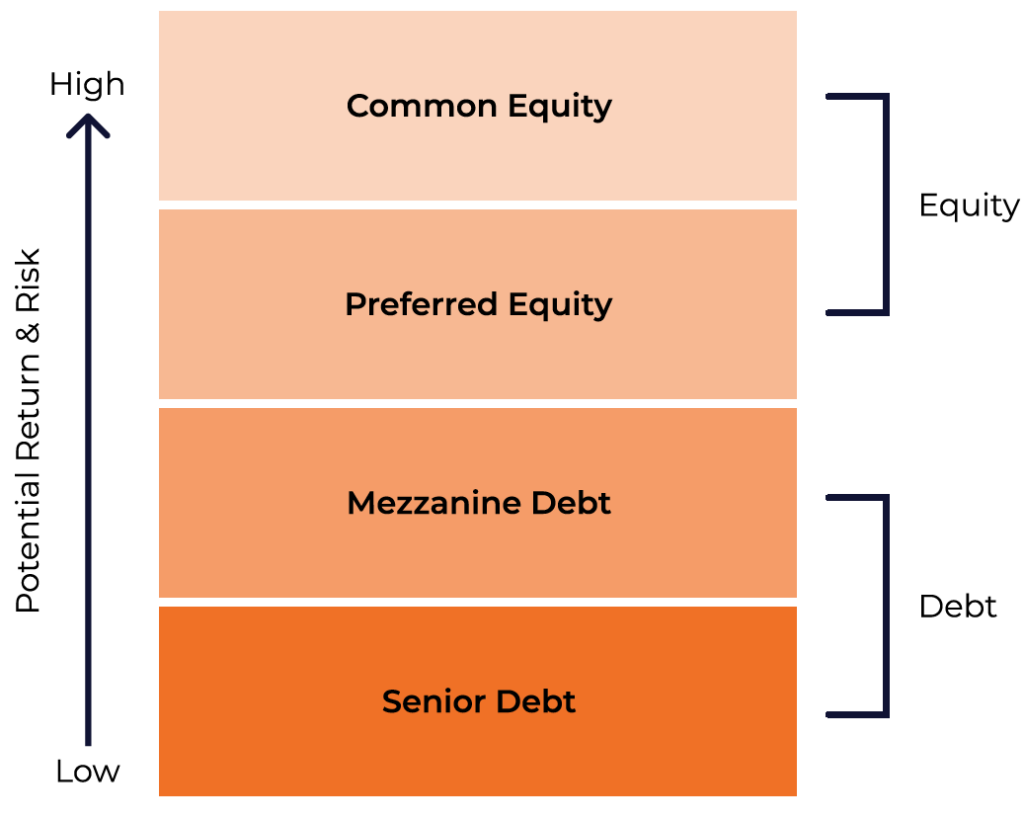The Capital Stack
The capital stack serves as a strategic framework for allocating funds based on risk appetite, return expectations, and project dynamics. It enables investors to diversify their funding sources, optimizing the mix of debt and equity to achieve desired returns while managing risk.

Real estate investing is a multifaceted realm where financial strategies shape the success of projects. At the heart of these strategies lies the concept of the capital stack, a complex layering of funding sources that underpins real estate transactions.
The capital stack has significance in determining investment decisions and project outcomes. The capital stack refers to the hierarchy of various financing components that combine to fund a real estate project. It comprises both debt and equity components, each with its own risk-reward profile.
Some of the components typically found in the capital stack are below:
1. Senior Debt
This component represents the primary mortgage or loan secured by the property. Senior debt holders are given the highest priority in repayment, making it relatively lower risk but with potentially lower returns.
2. Mezzanine Debt
Positioned between senior debt and equity, mezzanine debt bridges the gap between traditional loans and equity investment. It offers higher returns than senior debt but carries more risk.
3. Preferred Equity
Preferred equity holders have priority over common equity holders when it comes to distribution of profits. They usually receive a fixed dividend before any distribution to common equity holders.
4. Common Equity
Common equity represents ownership in the property and offers the highest potential returns. However, it also carries the highest risk since equity holders are the last to be paid in case of project failure.

When deciding on what level of the capital stack to participate in, investment managers consider the following:
1. Risk Management
The composition of the capital stack directly influences the risk profile of the investment. Balancing various components allows investors to mitigate risks while maintaining the potential for attractive returns.
2. The Cost of Capital
The different layers of financing come with distinct costs. Senior debt generally carries lower interest rates compared to mezzanine debt or equity. Investors must strike a balance between cheaper funding and risk exposure.
3. Return Requirements
The capital stack accommodates varying return expectations of different investors. Those seeking more conservative returns may prefer senior debt or preferred equity, while others with higher risk tolerance opt for common equity.
4. Project Viability
Structuring the capital stack appropriately is crucial for securing financing and ensuring project viability. Lenders and investors assess the stack’s composition when evaluating the project’s ability to generate sufficient cash flow to cover obligations.
The capital stack serves as the financial backbone of real estate investments. Its composition influences investment decisions, project viability, and ultimately, the success of real estate endeavors. By understanding and effectively utilizing the capital stack, investors can navigate the complexities of real estate financing, shaping projects that stand on a strong foundation of financial stability.




